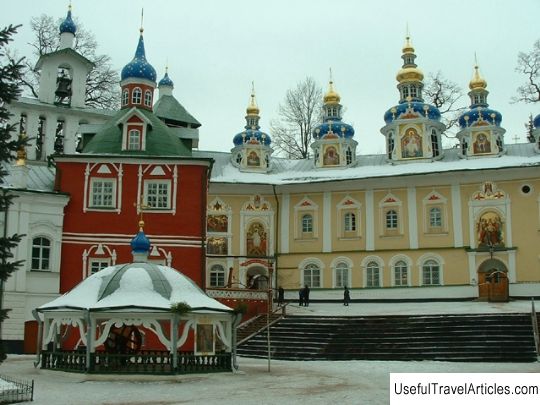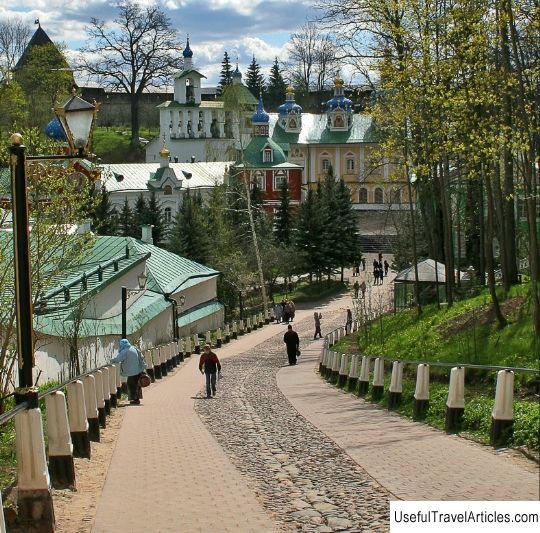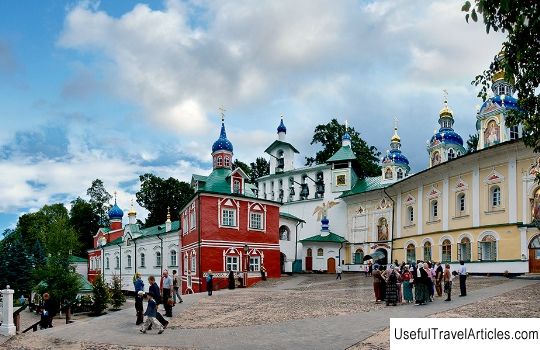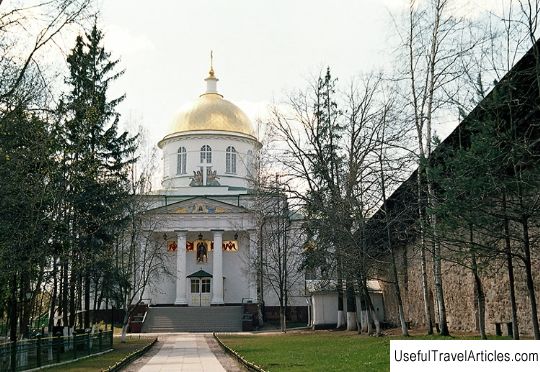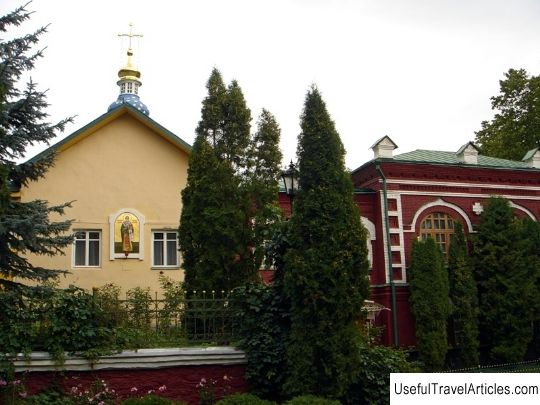Holy caves of the Pskov-Pechersky monastery description and photos - Russia - North-West: Pechory
Rating: 8,6/10 (900 votes) 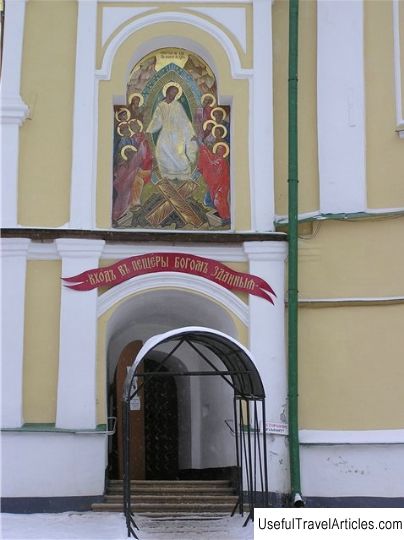
Holy caves of the Pskov-Pechersky monastery description and photos - Russia - North-West: Pechory. Detailed information about the attraction. Description, photos and a map showing the nearest significant objects. Photo and descriptionUnlike the largest number of Russian monasteries, which were erected on steep coastal river zones or hills, the ensemble of residential buildings and temples of the Pskov-Pechersk monastery is located in a depression that was washed in a large ring high hills by the Kamenets river. One of the hills has an entrance at its base that leads into an extensive system of caves, first mentioned in 1392. A former priest from the city of Pskov, John Shestnik, built a monastery in this place in 1473, and soon after that a cave temple in the name of the Dormition of the Mother of God. After the construction of the cave and the temple, they began to put in order, giving them a more splendid appearance, and the outer wall was strengthened with bricks. Right at the entrance to the holy caves, you can see the relics of the Monks of the Caves Jonah, Mark, the sagacious Lazarus, as well as the Reverend Mother Vassa. In essence, the caves are a holy monastery cemetery, although the exact number of burials has not yet been established. There is an assumption that about ten thousand people are buried in these places. Throughout the year, the temperature in the caves does not rise above +5 ° C. From the entrance to the caves there are seven underground galleries, which is the so-called streets, which have expanded and lengthened over different periods of time. The fifth and sixth streets are called fraternal ones - it is here that the monks of the monastery are buried. The burial of pilgrims was carried out in other galleries, in which there are burials of the defenders of the monastery and pious laity. Lime and ceramic slabs with ancient inscriptions - ceramides were once installed in the cave walls; these records are tombstones and are of great historical and artistic value. At the end of the main street there is an eve - a specially designed candlestick designed in the form of a small table. A memorial service takes place near the eve. As you know, a memorial service is a funeral service that contains a prayer to God for the forgiveness of all sins, as well as the repose of the soul of the deceased in heavenly abodes. There is a pious custom, which provides for praying at the funeral service, while holding a candle in your hands as a sign that the hearts of the afflicted burn with love and faith in the Lord God, and that their souls are transferred to the Kingdom of eternal light, bliss and eternal joy, where the Lord and all the saints dwell. Immediately after the eve, there is a cross made of wood, and to the right of it is the burial place of an outstanding Orthodox bishop - Metropolitan Veniamin Fedchenko, who became known as a church writer, most of whose works were published. On the left side of the cross are the relics of the Russian New Martyr Georgy Sadkovsky, who for many years was imprisoned in camps and prisons. The largest part of the slabs in the monastery caves are tombstones of noble noblemen, as well as their families from Pskov, Toropetsk, Novgorod. The events of the inscriptions, well preserved on stone and ceramic slabs, make it possible to find out sufficiently detailed information about some families and their family ties. It is in the caves that about twenty members of the Burtsev family are named, and their relationship with other surnames is also mentioned. Approximately eleven people belong to the family of landowners from the city of Pskov by the name of Nazimov, and seventeen people belong to the Tatishchev family. In addition, the soldiers who defended the monastery during numerous wars are buried in the caves. The famous caves of the Pskov-Caves Monastery are a unique resting place of the saints, which is literally saturated with the prayers of devoted ascetics; a place is truly sacred, which is an artistic, unique and historical monument or necropolis, which at the moment has no analogues in terms of the safety and completeness of tombstones.      We also recommend reading Ruins of Fortaleza de Armacao de Pera description and photos - Portugal: Armacao de Pera Topic: Holy caves of the Pskov-Pechersky monastery description and photos - Russia - North-West: Pechory. |
